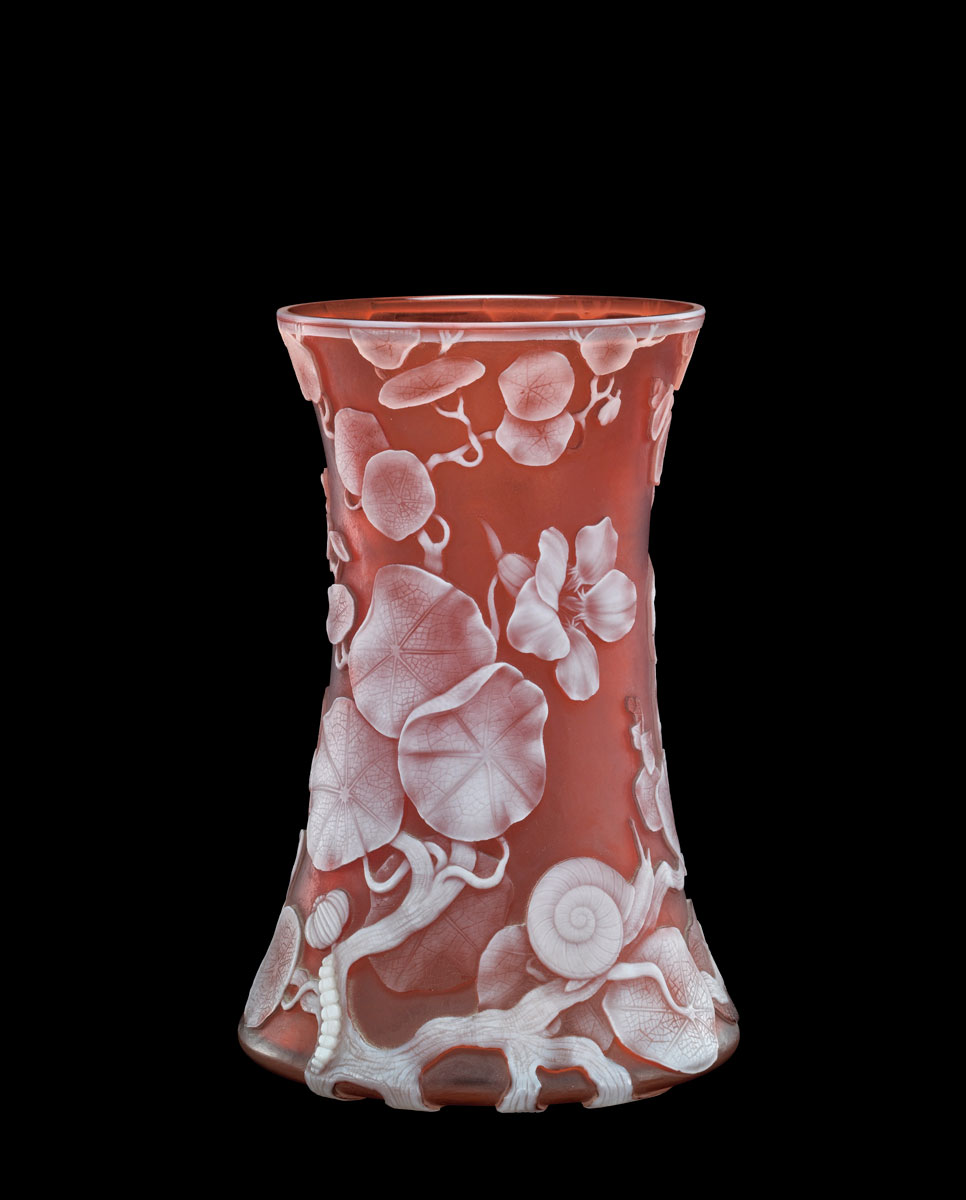
CAMEO GLASS
Cameo carving is an exacting technique of creating decoration by layering different colors of glass during the blowing process, and then carving through the hardened layers to create a design.










Manufacturer unknown (Stourbridge, England)
Pair of Cameo Vases, c. 1880
Opaque white and pale-yellow lead glass: blown, overlaid, acid-etched, cameo-carvedCorning Museum of Glass, Corning, New York
Gift of Juliette K. Rakow in memory of Leonard S. Rakow, 89.2.23 A-B
Wordsley Glass Works (Stourbridge, England, c. 1774–1934), manufacturer
Probably William Northwood (English, 1857–1937), engraver
Cameo Vase, c. 1880
Ruby, colorless, and white glass: blown, cased, acid-etched, tooled, carved.Corning Museum of Glass, Corning, New York. 2010.2.50
Thomas Webb and Sons (Amblecote, Stourbridge, England, founded 1837), manufacturer
Fridolin Kretschman (Bohemian, c. 1850–1898), cutter
Jules Barbe (French, active 1878–99), enameller and gilder
Gourd-shaped vase, 1888
Ruby and opaque white lead glass: blown, overlaid, acid-etched, carved, enameled, gildedCorning Museum of Glass, Corning, New York
Gift of Juliette K. Rakow in memory of Leonard S. Rakow, 89.2.7
Wordsley Glass Works (Stourbridge, England, c. 1774–1934), manufacturer
Probably William Northwood (English, 1857–1937), engraver
Cameo Vase (detail), c. 1880
Ruby, colorless, and white glass: blown, cased, acid-etched, tooled, carvedCorning Museum of Glass, Corning, New York. 2010.2.50
Thomas Webb and Sons (Amblecote, Stourbridge, England, founded 1837), manufacturer
Fridolin Kretschman (Bohemian, c. 1850–1898), cutter
Jules Barbe (French, active 1878–99), enameller and gilder
Gourd-shaped vase (detail), 1888
Ruby and opaque white lead glass: blown, overlaid, acid-etched, carved, enameled, gildedCorning Museum of Glass, Corning, New York
Gift of Juliette K. Rakow in memory of Leonard S. Rakow, 89.2.7